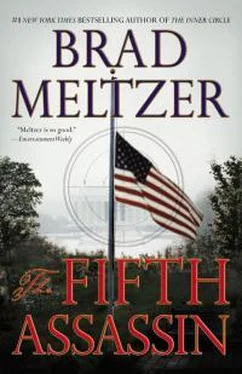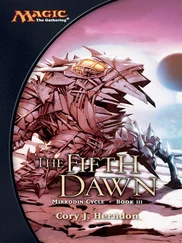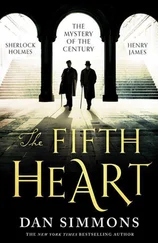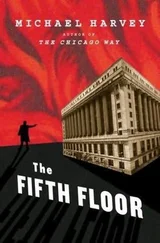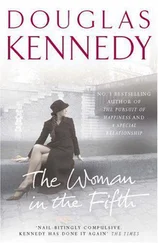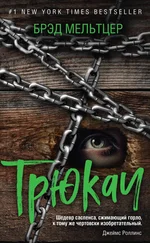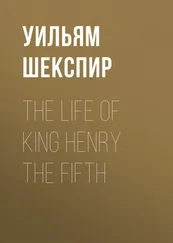None of it was news to Marshall. He’d been here two weeks ago, in the exact same spot: standing outside the metal gate, eyeing the keypad.
Electric gates like this all operated over radio frequency, usually between 300 and 433 megahertz. But to get inside, you didn’t need to find some top-secret frequency. You simply needed a way into the powder-coated metal access box below the keypad.
Fortunately, Marshall was good with locks. As good as anyone. With nothing more than two slivers of metal, the tiny lock turned and the access box popped open, revealing a circuit board. From there, it was like operating a light switch. When you flip a light switch on, a small piece of metal is lowered into place, connecting two wires. When that connection happens, the power starts flowing.
It was no different here. Holding a strip of eighteen-gauge wire that was thinner than a paper clip, Marshall touched it to two metal screws on the circuit board. As the electricity began to flow, the metal gate jumped, then rolled wide open.
Same as two weeks ago.
Stepping inside, Marshall didn’t even attempt to hide. This was a nearly empty army facility. How hard could it be to find a 1966 pale blue Mustang?
40
All around us, the display cases of the museum are covered with white sheets. Cardboard boxes are stacked like crooked pillars in every corner. The museum is in the process of moving. At the center of the room, Tot and I are both staring down, squinting into one of the few uncovered glass cases, like the ones that hold jewelry at department stores. But what’s inside is far more valuable than diamonds.
The two circular flat velvet discs have their own glass tops. Little flecks of white sit at the center of each disc: They look like human teeth that’re broken in half. There’s a larger chunk too.
“Abraham Lincoln,” I whisper.
“Abraham Lincoln’s skull ,” Dale clarifies, showing that, like every archivist, she’s a stickler as she points down at the old bone fragments. “Or at least what’s left of it.”
“Why do you even have this?” I ask, unable to look away.
“That’s what we do,” Dale says, sounding almost cocky as she runs her fingers down the Def Leppard lanyard that holds her ID around her neck. As she twirls it, I spot a stack of concert tickets tucked behind her ID. I’m not gonna ask. “Back in 1862, when they founded us as the Army Medical Museum, our job was to document the effects of war on the human body. So the Smithsonian was sent all the cultural items. And we were sent all the human body parts, including the pieces of Abraham Lincoln.”
“And the shirt with his blood on it. And the bullet,” I say excitedly as I race from case to case. Speed-reading as I go, I can’t help but think that the exhibit would be better served if it started with—
There it is. The final item in the final case: the small silver slug of metal that resembles a wobbly lead gumball.
The bullet that killed Abraham Lincoln.
“Tot, you need to see this.”
He’s back by the open doors of the exhibit. “Do I need to close these?” he calls out.
“Doesn’t matter,” Dale says with a wave. “We’re the only ones here.” Following behind me, she motions down to the bullet.
I hold my breath as I read the description. This handmade ball of lead, fired from a Philadelphia Derringer pistol, was removed from Lincoln’s brain during autopsy by Dr. Edward Curtis.
Dale doesn’t say a word. Dr. Curtis’s own words are laminated on a card just below the bullet, in a letter he wrote to his mother. He explains that when they took out Lincoln’s brain to track down the bullet, he was lifting the brain from the skull and suddenly the bullet dropped out through my fingers and fell, breaking the solemn silence of the room with its clatter, into an empty basin that was standing beneath. There it lay upon the white china, a little black mass no bigger than the end of my finger—dull, motionless and harmless, yet the cause of such mighty changes in the world’s history as we may perhaps never realize.
I’m still holding my breath. On my left, Dale isn’t playing with her lanyard anymore. Even today, there’s no way to know all the changes to history that came from John Wilkes Booth’s actions that day. But whoever’s killing these pastors now, if they really are working toward the current President, I can’t help but think they’ve got their own idea.
“Tell me about the Lincoln mask,” I say, finally breaking the silence.
Pointing us to the left, toward a nearby case, Dale yanks on the eggshell-colored sheet, revealing another glass museum case. An empty one.
“I came in two weeks ago and—poof—it was gone.” From a nearby display case, Dale grabs a file folder, flips it open, and pulls out a blown-up color photo of what used to be in this case: a plaster mask. There’s no mistaking who it is—the pointy nose, the high cheekbones—even in full plaster, we all know Abraham Lincoln. But unlike the mask from Marshall’s apartment, the one in this photo has plaster over the eyes. Marshall’s had holes cut into it. So someone could see through it. More important, this one is yellowed and old. Marshall’s was pristine and white.
“Look familiar?” Tot asks, as I replay what Marshall told me. That he supposedly found the mask in a garbage can a few blocks from the crime.
“Dale, if someone stole the mask, how hard would it be to make another cast from it?” Tot adds, already knowing what I’m thinking.
“That was the whole point. Once the cast existed, people could use it to make busts of the President without having to bother him. They even used it to make the big statue in the Lincoln Memorial. What’s odd is, ours is just a copy of the original.”
“So what you’re saying is that this mask isn’t even the most valuable thing here?” Tot interrupts in a tone that tells me he already knows the answer.
“Exactly… okeeyeah… that’s exactly my point!” Dale insists a bit too enthusiastically as she readjusts her glasses. “Lincoln’s bone fragments and the bullet that killed him, those things are priceless. But to take a reproduction plaster mask and some random pieces of Booth. How does that make any—?”
“Booth?” I blurt. “You mean as in John Wilkes Booth ?”
Dale looks at Tot, then over at me. “Back then, in the 1860s,” she explains, “we were sent everybody .”
“So you also have pieces of John Wilkes Booth,” Tot says, full of fake excitement. “And those pieces were stolen too?”
Tot’s not stupid. He knew about the Lincoln mask and the Booth part long before we got here. But for him to keep the Booth part from me… to hold it back… I’ve known Tot since my very first day at the Archives. In the Culper Ring, I put my life in his hands. Why would he lie about—?
He shoots me a look and I get the rest.
Marshall.
Back at the restaurant, he was worried I’d tell Marshall.
You’re wrong , I say to him with just a dirty look.
Doesn’t matter , he replies with his own look.
But it does. Trust always matters.
“Can we see it?” Tot asks, motioning for Dale to lead the way.
“Absolutely,” she says, her Def Leppard lanyard twirling as she leads us to the last remaining body parts of John Wilkes Booth.
41
St. Elizabeths Hospital
Washington, D.C.
Nico knew all about steganography, which was Greek for hidden writing .
He knew of its history in ancient Greece, where they wrote messages on wooden tablets, then covered the tablet in wax, which made it look blank. It wasn’t until the tablet was delivered and the wax was scraped away that the hidden message was revealed.
Читать дальше
